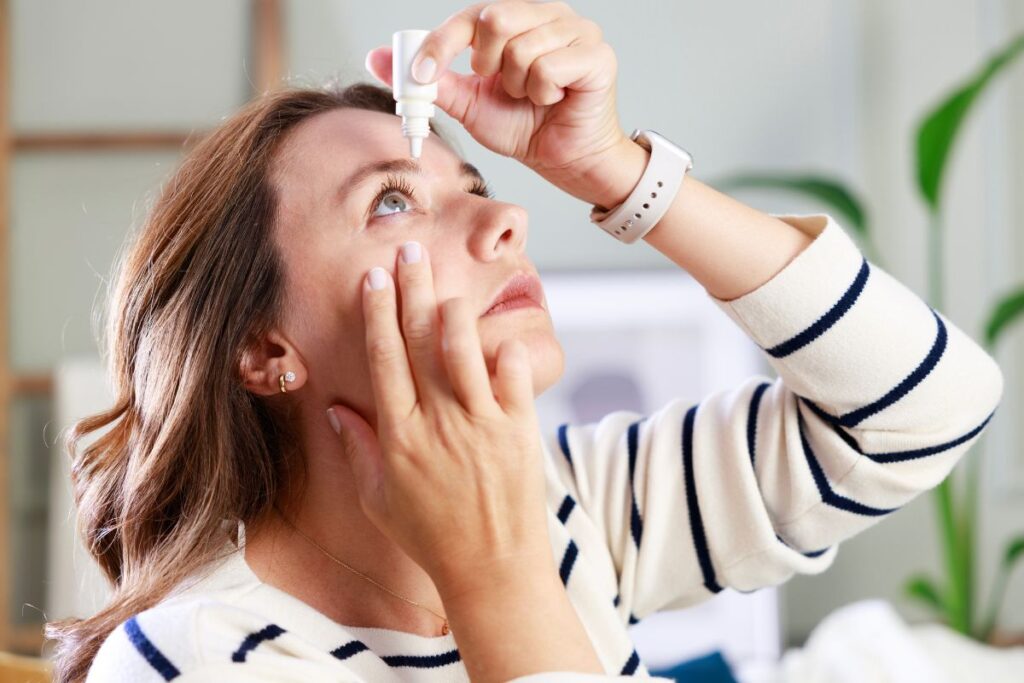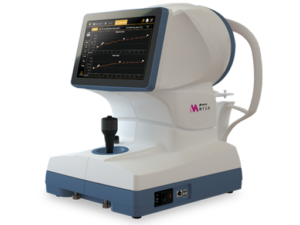
Dry Eye Syndrome and Treatment in Edmonton
Do you find yourself frequently reaching for eye drops to soothe dry, itchy, irritated eyes? You’re not alone. You may be one of the millions of Canadians who suffer from dry eye syndrome. Although seemingly harmless, severe dry eye can lead to significant inflammation and even corneal ulcers if left untreated.
Fortunately, the optometrists at Optometrists’ Clinic Inc. in Edmonton can perform a comprehensive eye exam to diagnose and treat dry eye to help you see more clearly and live more comfortably. Contact us today to schedule an appointment!
Ask us anything
What is Dry Eye Syndrome?
Dry Eye Syndrome occurs when your eyes do not produce enough quality tears to keep the surface of the eye properly lubricated. Tears are essential for maintaining healthy eyes and providing clear vision. When tear production is insufficient or tears evaporate too quickly, it can lead to discomfort and irritation!
What are the different types of Dry Eye?
There are three primary types of dry eye, each requiring different treatment approaches:
- Evaporative Dry Eye (EDE): The most common form, EDE occurs when the oily layer of the tear film is insufficient due to meibomian gland dysfunction. This condition is often worsened by prolonged screen time and environmental factors like wind and low humidity.
- Aqueous Deficient Dry Eye (ADDE): This type occurs when the lacrimal glands fail to produce enough of the watery component of tears. It is frequently associated with autoimmune conditions like Sjögren’s syndrome and can cause significant discomfort.
- Mixed Dry Eye (MDE): A combination of both EDE and ADDE, making diagnosis and treatment more complex.
What happens if Dry Eye is left untreated?
Ignoring dry eye syndrome can lead to serious complications, including:
- Corneal damage: Chronic dryness can cause inflammation and corneal ulcers, potentially leading to long-term vision problems.
- Vision impairment: In severe cases, blurred vision or permanent damage to the cornea may occur.
- Decreased quality of life: Persistent discomfort can interfere with daily activities, reading, and screen use, significantly impacting overall well-being.
Can Dry Eye be completely cured?
Dry Eye Syndrome is a chronic condition, but effective management can significantly reduce symptoms and improve eye comfort. Working with an optometrist to create a personalized treatment plan is the best way to manage dry eye for long-term relief.
What are the symptoms of Dry Eye?
Symptoms of dry eye can vary from mild discomfort to persistent irritation. The most common signs include:
- Burning, stinging, or a scratchy sensation
- Excessive tearing or discharge
- Blurred vision
- Sensitivity to light
Approximately 30% of Canadians experience dry eye symptoms at some point!
What causes Dry Eye Syndrome?
Although dry eye can affect anyone at any age, it is most common in people over 50. Several factors can contribute to its development, including:
- Environmental factors: Wind, sun exposure, air conditioning, and low humidity can exacerbate symptoms.
- Lifestyle choices: Prolonged screen time, contact lens use, and inadequate blinking can lead to dryness.
- Medical conditions: Diabetes, arthritis, thyroid disorders, and autoimmune diseases like Sjögren’s syndrome increase the risk.
- Medications: Certain medications, including antihistamines, antidepressants, and oral contraceptives, can reduce tear production.
- Aging: Tear production naturally declines with age, making dry eye more prevalent in older adults.
- Hormonal changes: Fluctuations caused by pregnancy, menopause, or hormonal contraceptives can contribute to dry eye symptoms.
How is Dry Eye diagnosed and treated??
An optometrist can diagnose dry eye through a comprehensive eye exam and assess the severity of the condition. Treatment options may include:
- Artificial tears: Over-the-counter lubricating eye drops can help relieve mild symptoms.
Prescription eye drops: - Anti-inflammatory medications or prescription eye drops may be recommended for moderate to severe cases.
- Lifestyle changes
- Using warm compresses on the eyelids to reduce inflammation
- Increasing humidity levels at home
- Reducing screen time and practicing the 20-20-20 rule (look away from screens every 20 minutes for 20 seconds at an object 20 feet away)
- Nutritional supplements: Omega-3 fatty acids have been shown to reduce inflammation and improve tear quality.
Treat Dry Eyes in Edmonton
If you think you may be suffering from dry eye, the optometrists at Optometrists’ Clinic Inc. can help. We’ll conduct a comprehensive eye exam to understand the cause of your symptoms and suggest effective treatment options. We also carry a wide selection of eyeglasses and contact lenses. We’re happy to serve you from five locations in Edmonton, Westlock and Leduc.
Contact us today to set up an appointment or shop our dry eye products store!
Learn More About Eye Health

Our New Topcon MYAH Machine for Myopia Management!
Introducing the Topcon MYAH: A New Era in Myopia Control at The Optometrists’ Clinic At The Optometrists’ Clinic, we’re proud to stay at the forefront of eye care technology—and our

Frequently Asked Questions About Eye Floaters
Do you notice strange spots in your vision that seem to drift slowly around and then dart away when you try to focus on them? You may have eye floaters.

Warning Signs of Vision Problems in Young Children
As a parent, you want to ensure your child is thriving, but it can be difficult for young children to realize or express that they’re experiencing vision problems. Whether they’re
Book your eye exam with The Optometrists' Clinic today!
We invite you to get in touch, so that we can support you & give you the tools and knowledge you need to care for or improve your vision!



